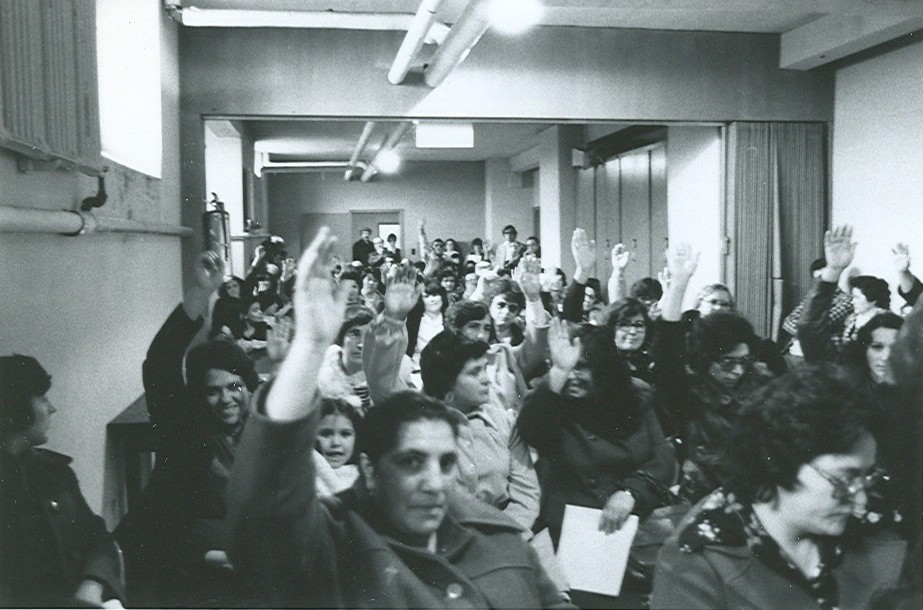“Was it a strategy? I don’t remember. We weren’t very strategic. It was just go for the issue, we’d go for the issue.”

Even before “Cleaner’s Action” had officially formed, night cleaners were already fighting against indignity on the job. One early action was a wildcat strike at the TD towers in 1974. Workers had been ordered to re-use the plastic garbage bags. They protested on the grounds that the smell made them want to vomit. In 1975, when night cleaners began to organize at Queen’s Park, they approached staff at the Portuguese West of Bathurst Project (P.I.S.E.M) at St. Christopher House for support. P.I.S.E.M responded quickly and provided staff for “Cleaner’s Action”. Over the years, these staff would help the cleaners to meet regularly, gain media support, produce a newsletter, and advocate for themselves. Many of the staff at Cleaner’s Action were schooled in the popular education techniques of Paulo Freire which merge education with critical thinking and self-empowerment. ESL classes were therefore venues to speak about labour issues, rights and inequity. Sydney Pratt, one of the key staff at P.I.S.E.M. told us that Cleaner’s Action was just a logical way to respond to the needs of the community.
“Cleaners’ Action was a way to amalgamate all of these things. Sometimes you need a name to represent all of these things that you are doing. So it was a tactic. I didn’t much care if there was an institution or a way of continuing to do it.”
Cleaner’s Action Memory Archive

